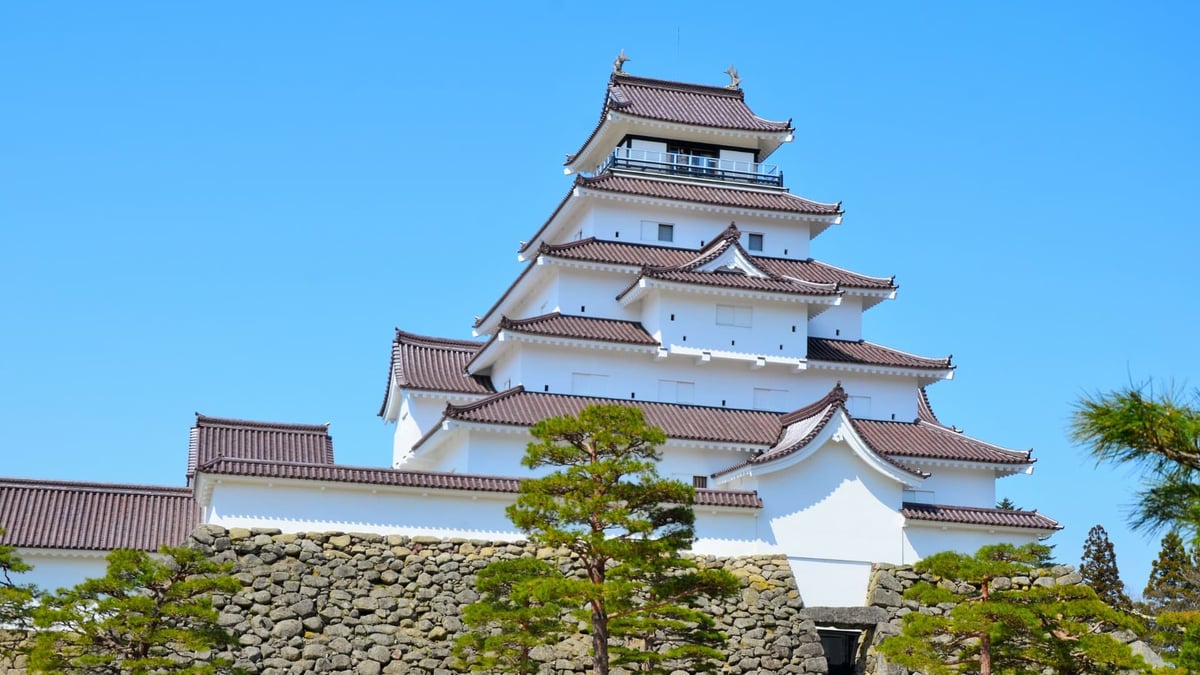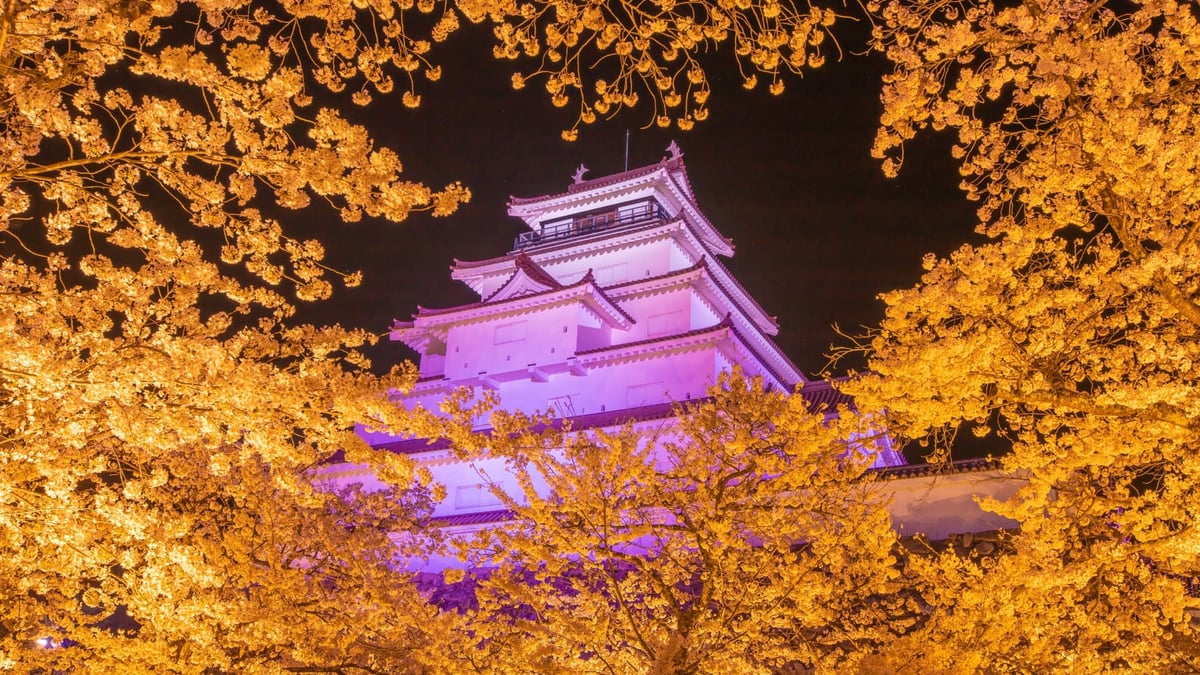🕓 2025/3/6
#観光地

Table of Contents
- Ouchi-juku | A Historic Edo-Period Post Town with Thatched Roofs
- Tsuruga Castle | The Majestic White Fortress That Survived the Boshin War
- Tadami Line | One of Japan’s Most Scenic Local Railways
Top 3 Must-Visit Tourist Spots in Fukushima
ー What is Fukushima? ー
Fukushima Prefecture is located in the southern part of the Tohoku region in Japan, with Fukushima City serving as its prefectural capital. This area is known for its rich natural landscapes, deep historical roots, and diverse cultural traditions.
Visitors are drawn to the historic sites of Aizuwakamatsu, the breathtaking natural scenery of Mount Bandai, traditional handicrafts, and local delicacies. Fukushima is also historically linked to Date Masamune, making it a fascinating destination for history enthusiasts.
In 2011, Fukushima faced severe devastation due to the Great East Japan Earthquake, with the nuclear disaster having long-term effects on the region. Despite these challenges, the resilience of the local communities has strengthened, and continuous efforts toward recovery and revitalization are ongoing.
1. Ouchi-juku | A Historic Edo-Period Post Town with Thatched Roofs




● The Charm of Ouchi-juku
Ouchi-juku is a historic post town located in Shimogou Town, Minamiaizu District, Fukushima Prefecture, preserving the atmosphere of the Edo period (1603–1868). Around 400 years ago, it flourished as a key post town on the Aizu Nishi Kaido, a trade route connecting Aizu and Nikko. Today, more than 30 thatched-roof houses line the town, preserving its original appearance. In 1981, it was designated as an Important Preservation District for Groups of Traditional Buildings by the Japanese government.
The town offers seasonal beauty, from cherry blossoms in spring, lush greenery in summer, vibrant autumn foliage, to the picturesque snow-covered thatched roofs in winter. The snow-covered landscape in winter creates a mystical ambiance, attracting many visitors. One of the town’s unique culinary experiences is Negi Soba, a local specialty where diners use a long green onion instead of chopsticks to eat soba noodles.
Ouchi-juku is one of Fukushima’s most representative historical and cultural destinations, allowing visitors to step back in time and experience the Edo period firsthand. With its well-preserved townscape, stunning natural surroundings, and unique local cuisine, it offers a truly immersive travel experience.
● History of Ouchi-juku

The history of Ouchi-juku dates back to the early Edo period, when the Tokugawa shogunate, under the order of Tokugawa Ieyasu, established key transportation routes linking Edo (Tokyo) and the Tohoku region. The Aizu Nishi Kaido was one such route, and Ouchi-juku was established as a post town along this road to provide lodging and rest stops for feudal lords (daimyo), merchants, and travelers.
During the Edo period, Ouchi-juku prospered, with over 100 thatched-roof houses at its peak. The town’s residents ran inns and teahouses for travelers, engaged in farming, horse care, and cargo transport, and managed a checkpoint called “Kuchidome Bansho”, which controlled the passage of travelers and prevented the movement of criminals or suspicious individuals.
However, as Japan modernized, traditional thatched-roof houses were gradually replaced by concrete buildings. Concerned about the loss of its historical charm, local residents and authorities launched preservation efforts, leading to its official designation as an Important Preservation District for Groups of Traditional Buildings in 1981. Thanks to these efforts, Ouchi-juku remains one of the best-preserved Edo-period post towns in Japan.
● Access to Ouchi-juku
- Address: Ouchi, Shimogou Town, Minamiaizu District, Fukushima Prefecture, Japan
- Transportation: About 1 hour by car from Aizu-Wakamatsu Station
- Google Maps:大内宿のGoogleマップ





● The Charm of Tsuruga Castle
Tsuruga Castle, an iconic symbol of Aizuwakamatsu City, Fukushima Prefecture, is renowned for its striking red-tiled keep and rich history. It gained fame during the Boshin War (1868-1869) as an "impregnable fortress", resisting intense battles. Today, it is recognized as one of Japan's Top 100 Castles.
Standing 36.5 meters tall, the castle's white walls and red roof tiles create a stunning contrast, making it one of Japan's most picturesque castles. The castle grounds are home to approximately 1,000 cherry trees, primarily Somei Yoshino, earning it a place among "Japan's Top 100 Cherry Blossom Spots." During spring, the fully bloomed cherry blossoms against the red-roofed castle create a breathtaking scene, enhanced by illuminations at night for a magical ambiance.
The Tsuruga Castle Ruins Park spans 69,000 tsubo (approximately 228,000 square meters), featuring a reconstructed keep, historical landmarks, and "Rinkaku", a tea house associated with Sōan, the son of the legendary tea master Sen no Rikyū. This tea house is a significant cultural site, offering visitors a glimpse into Japan’s refined tea culture.
● The History of Tsuruga Castle
![]()
The castle's origins date back over 630 years. In 1384, Ashina Naomori first built it as Higurokawa-kan, later known as Kurokawa Castle. In 1589, Date Masamune briefly took control, but the following year, Gamo Ujisato, under orders from Toyotomi Hideyoshi, became its new lord. Ujisato redesigned the castle into a seven-story keep, renamed it Tsuruga Castle, and contributed to the development of the surrounding castle town.
During the Edo period, earthquakes damaged the structure, leading to the reconstruction of the keep as a five-story structure, forming the foundation of the current design. The castle became legendary during the Boshin War, where it withstood a month-long siege by the new government forces, earning its reputation as an unbreakable stronghold.
However, in 1874, the Meiji government ordered its demolition, leaving only the stone foundations intact for decades. In 1965, the keep was faithfully reconstructed through the efforts and donations of local citizens, preserving its legacy for future generations.
● Access to Tsuruga Castle
- Address: 1-1 Otemachi, Aizuwakamatsu City, Fukushima Prefecture, Japan
- Transportation: 20-minute walk from Aizuwakamatsu Station or accessible by local bus
- Google Maps:鶴ヶ城のGoogleマップ
3. Tadami Line | One of Japan’s Most Scenic Local Railways






● The Charm of Tadami Line
The Tadami Line is a picturesque local railway stretching approximately 135.2 km, connecting Aizu-Wakamatsu Station in Fukushima Prefecture to Koide Station in Niigata Prefecture. It is renowned for its stunning scenery that changes beautifully with the seasons.
One of the most famous spots along the line is the First Tadami River Bridge, where the tranquil waters of the Tadami River create a perfect "water mirror" reflection, capturing the bridge and surrounding landscape. On misty days, the bridge is wrapped in river fog, creating an ethereal and dreamlike scene.
Each season offers a different charm—lush greenery in spring, deep verdant landscapes in summer, vibrant autumn foliage, and breathtaking snowy vistas in winter. During the autumn foliage season, many tourists and photography enthusiasts visit the area, and special seasonal trains are sometimes operated to accommodate the influx of visitors.
For those seeking the best view, a 15-minute hike from the roadside station "Oze Kaido Mishima-juku" leads to a stunning panoramic viewpoint overlooking the First Tadami River Bridge. This location attracts visitors from both Japan and abroad.
● The History of Tadami Line

The history of the Tadami Line dates back to 1926, when the Aizu Line was first opened, connecting Aizu-Wakamatsu Station to Aizu-Bange Station (21.6 km). Meanwhile, on the Niigata side, the Koide to Oshirakawa section (26.0 km) was developed as the Tadami Line, with the two sections initially operating as separate railway lines.
In 1963, the Japan Electric Power Development Corporation transferred its private railway, which had been used for the construction of Tagokura Dam, leading to the extension of the Tadami Line from Aizu-Kawaguchi to Tadami Station (27.6 km). Finally, in 1971, the last section connecting Tadami Station to Oshirakawa Station (20.8 km) was completed, linking the Fukushima and Niigata sections into a single railway line, forming the current Tadami Line.
However, in 2011, the Niigata-Fukushima heavy rain disaster severely damaged the railway between Aizu-Kawaguchi and Tadami Station, rendering this section inoperable for years. Train services were replaced by substitute bus transportation for a long period. Thanks to strong local support and efforts by residents and authorities, the full operation of the Tadami Line was finally restored.
● Access to Tadami Line
The Tadami Line runs 135.2 km between Aizu-Wakamatsu Station (Fukushima) and Koide Station (Niigata). The region along the railway is one of Japan’s heaviest snowfall areas, and during winter, the parallel Route 252 through the Rokujurigoe Pass is closed due to snow, making the Tadami Line an essential transportation route in winter.■ From Tokyo to Aizu-Wakamatsu
-
By Train:
- Take the Tohoku Shinkansen from Tokyo Station to Koriyama Station (approx. 80 min).
- Transfer to the Ban'etsu West Line from Koriyama to Aizu-Wakamatsu Station (approx. 80 min).
-
By Car:
- From Kawaguchi JCT, take the Tohoku Expressway to Koriyama JCT, then drive along the Ban'etsu Expressway to Aizu-Wakamatsu IC.
- From Aizu-Wakamatsu IC, follow National Routes 49 and 118 to reach the city center.
⚠️ Winter Road Closure Advisory:
- Route 252 through Rokujurigoe Pass is closed from early December to spring due to heavy snowfall.
■ 関連記事一覧
